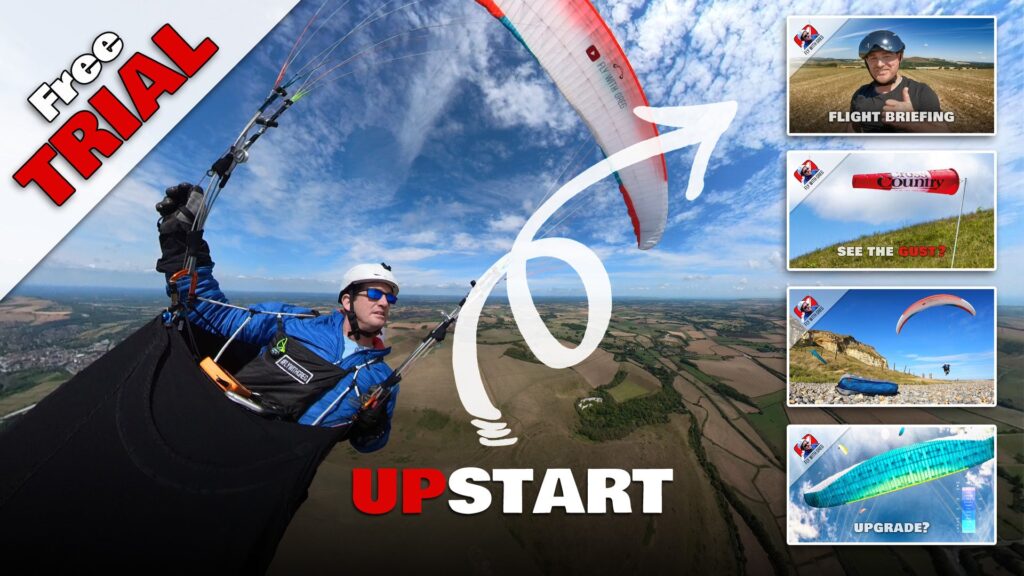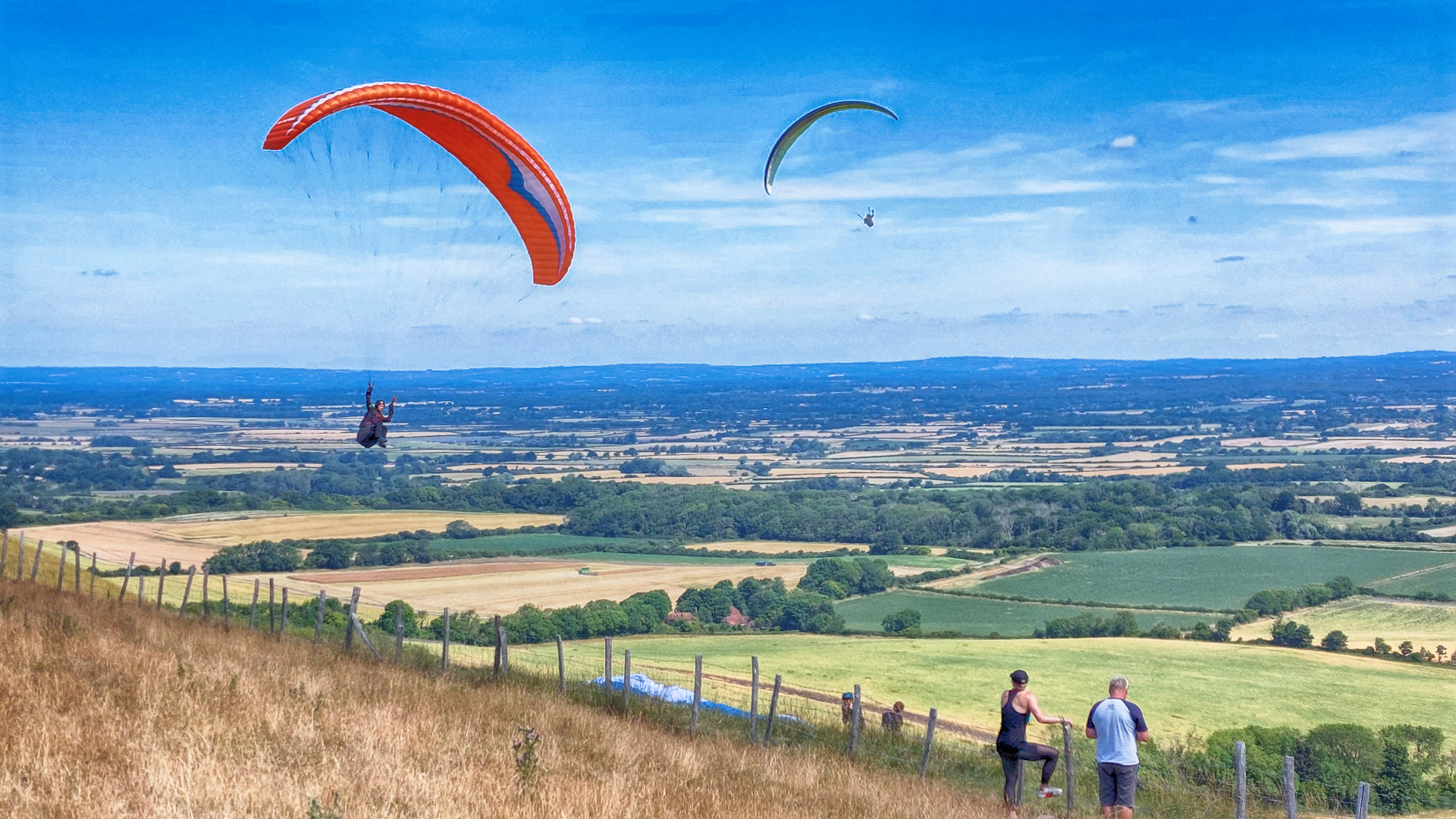Learning to paraglide is all about freedom. It is mostly unregulated but this does not mean you’re free to do anything, anywhere. There are laws that apply to all aircraft, the people you must protect and the land you fly from.
You might not agree with the laws, but if you’re going to learn to paraglide, you need to know about them.
Paragliding and the law
The big one is the Civil Aviation Authority and the commercial aircraft which use restricted airspace. Look at an airspace map and see what’s in your area. Avoid military airspace too unless you like the idea of being target practice.
We can fly paragliders in all the uncontrolled airspace, along with private aircraft, following whatever rules they have to follow, which in our case as paragliders, is very little.
“Clear of cloud, during the day, and not low over towns and other hazards, except while taking off, soaring, or landing” which covers you close to most terrain. You are unpowered and silent, so cannot cause a disturbance.
Most people cannot prevent you from overflying their property, because they are land owners, not sky owners, but if you find a nice place to fly, you’ll probably want to fly it regularly, and share the joy with your pilot friends, so you need some agreement with landowners or national parks officials to establish a launch site and safe landing field.
Paragliding insurance
In many places, when you fly near other people or property on the ground, there’s a tiny risk of you losing control and crashing. In a fraction of these cases, you could cause some very expensive damage. So many pilots have some kind of third party insurance cover. This usually comes with a paragliding licence. If you choose to fly without it, you put your assets or family at risk of a claim for the damages you might cause.
Paragliding sites
The landowner might charge you or your club something to allow you to operate a flying site on their land, but it’s unlikely to cover any legal claim visitors could make against the landowner. In some countries there’s no legal risk here, in others, the landowner has a legal duty of care towards users of their land. If you’re flying from open land like many mountain regions or coastlines, there’s no problem, but if you duck under this red tape on a popular flying site that was negotiated on private land on the basis of this landowner liability cover, you will upset the local pilots.
How Paragliding Associations work
In Paragliding: The Beginner’s Guide you can see how the national systems compare, and learn much more about their value to you. This is a highly recommended book for you to study.
For instance, in the UK, the BHPA acts as a collective voice when resisting further restrictions on our freedoms. It provides a rating scheme, so you can be sure of a minimum standard of training and pilot behaviour. It investigates accidents and issues advice.
Because of the safety record and low claims history, it can negotiate group insurance, which is much cheaper for everyone. And this gives us access to many more flying sites. It is run mostly by volunteers and does a massive amount of work for freeflight.
Your national association is probably run on a similar basis.
Learning to fly a paraglider
Getting training at a registered school means you avoid making the mistakes other self-learners made. The safe learning path is laid out before you.
You don’t need any prior experience or special skills but it’s invaluable to have an expert instructor at your side to guide you through the practical phase of learning to fly. The school will provide a safe controlled environment so you can concentrate on one thing at a time, instead of being overwhelmed by complexity.
They provide a forgiving training wing, a gently sloped training site, with the right kind of weather … and you absorb a lot of by watching the others and listening to the instructors correcting their mistakes.
The paraglider is an incredible aircraft that is very simple to operate … until it isn’t. That’s where the school you choose makes a big difference, showing you the shortcuts to get back into control, before you do something that hurts you.
If you’re lucky your school operates tandem gliders too, so you can get airborne and learn additional skills, or just try it out to see if this is really your thing.
Learning to paraglide overseas?
Learning to paraglide in Spain, France, Bulgaria or India is an attractive idea, with intensive training and good weather but be sure that the training is relevant to the environment you will fly in.
For instance, on returning to the UK many pilots find themselves unprepared for soaring through traffic in strong wind over small sites, where toplanding and slopelanding are required skills. Make sure your national association recognises the training you receive or has a simple conversion pathway for you to gain your licence.
At the end of the day, it’s about you getting easy access to the best flying sites, so you can ‘work less, fly more’ … as you’ll learn to do at Fly Sussex. Or my other partner schools like Flight Park, Oase, Eagle, and Birdmen.
Do I need a paragliding licence?
How you get there, is up to you. You can choose to be a ‘rogue’, flying solo from the wild places, beyond the reach of clubs, licences and insurance policies. Or you can join the community, follow the established rules that are put in place for your safety, contribute to the collective insurance pot, join competitions and learn from shared knowledge.
Flying clubs are extremely welcoming to new pilots who want to follow the rules.
People can become unreasonable about insurance and licences. In some places neither are a legal requirement. You might be in a part of the world where training opportunities are limited. Self-training is possible, but it’s not recommended without at least some expert guidance.
If access to the wilderness is unrestricted in your area, then site access isn’t an issue and insurance is up to you.
But in most places around the world, the system was created by pilots just like you, to protect your access to freeflight. If you’re new on the scene, it’s more fun to follow the rules and make friends. It’s far more important that you know how to fly well and so you avoid the accident in the first place.
Online paragliding courses?
Whichever path you choose, your development as a pilot can be massively boosted by my online training system. I am independent of national curriculums and licensing restrictions. I teach technique, and applied flight theory, so you can progress fast from absolute beginner to a high level.
In my FLIGHT LEVEL courses you will get detailed training in the fundamentals of freeflight. There is nothing like it available online. I have condensed a lifetime of learning into my syllabus.
It complements your flight school training by boosting key skills, correcting bad habits and explaining everything you need to know.
These courses are included in your Academy membership, so you can dive into a broader catalogue of lessons and get your questions answered on a continued basis. Members even get money back on training and gear.
Learning to fly is amazing. Let’s get you started …


